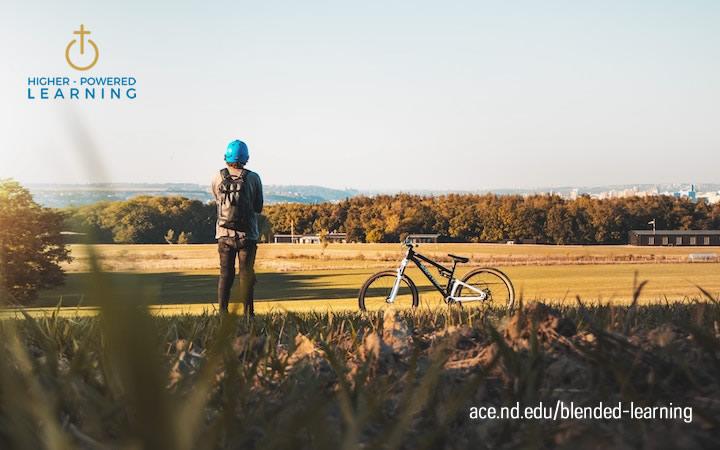Mountain bikers must consider many factors to maximize their workouts, but the most important factor is fun maximization.
Similarly, when instituting a change like blended learning in an entire school, plenty of factors should be considered to maximize teacher and student learning. But the most important factor is altering the learning culture at a school. I have found quite a few parallels between mountain biking and instituting school change.
Find the Path of Least Resistance
When mountain biking, the trails can be rocky and steep. One strategy I always use to conquer a particularly tricky mountain biking path is to look ahead and make a path around the challenging section of the trail. When I make a "path of least resistance," I cannot avoid all the bumps, but making a plan allows me to avoid the bigger bumps in the trail.
Change management strategies at the school level are the same. When implementing a change at a school level, you must make a plan to address all the bumps in the road before you get started.
This year, we orchestrated a plan for our Blended Learning Advancement and Strategy Teams (BLASTs) to foster blended learning with their entire school teams. To help our new coaches focus on small chunks of change at a time, we broke our blended-learning walkthrough tool into small, manageable pieces.
Laying out this path of least resistance helped our coaches see and prioritize the critical steps they needed to help their schools become ready to implement rigorous blended learning.
When You Hit a Bump, Power Through The Challenge
While I am crashing through the forest on my mountain bike, no matter how much I plan out my path of least resistance, a bump or an exposed root I didn't anticipate always pops up. Whenever you hit that big bump in the road, you know that you have to power through the challenge, or you will fall off your bike.
During our rollout, we hit some snags with the software program we use to integrate our coaching. While it was tempting to throw out the software and create our own system, we powered through the challenge. We worked closely with the software company to identify the problem, communicated with our teachers, and conducted sessions to walk our teachers through the use of the program. After powering through, our team found that the program was benefitting coaches and giving us rich data about the blended-learning progress in each school.
If You Get Off The Path, Just Get Back On
The mountain biker community loves a video series called "Friday Fails" in which bikers submit videos of their crashes. In most videos, when bikers crash off their bikes or slide off the path, they laugh and jump right back on their bikes.
Having a good attitude about crashes — which are inevitable — makes the sport fun. However, if you "fear the crash," you won't ever find the joy of speeding around trees on a mountain bike.
Similarly, during a significant change at a school, the process can be hard and scary. Sometimes teachers resist a change because they don't know what to expect. Other times, teachers resist because they are nervous about failing at implementing the new change.
At some of our schools, we have seen teachers who fear the crash before it ever happens. Our job is to train our coaches to show their colleagues that while crashes may happen, you must learn from them and continue working towards mastery.
We value our coaches because they have learned so much from implementing blended learning in their classrooms. As mentors and coaches, we know that our coaches have been transparent with their colleagues about their victories and crashes. By sharing this information with their colleagues, our coaches are helping their teachers see that the crashes aren't scary. When we learn from the crashes, we grow as riders and as teachers.
While I am still waiting for the mountain biking season to begin, I am inspired to be able to use the lessons I've learned as a biker when discussing change management with our coaches.
We are looking forward to hearing from you! What are some strategies that you use to manage a big schoolwide change? Let us know in the comments below.
 Alliance for Catholic Education
Alliance for Catholic Education
